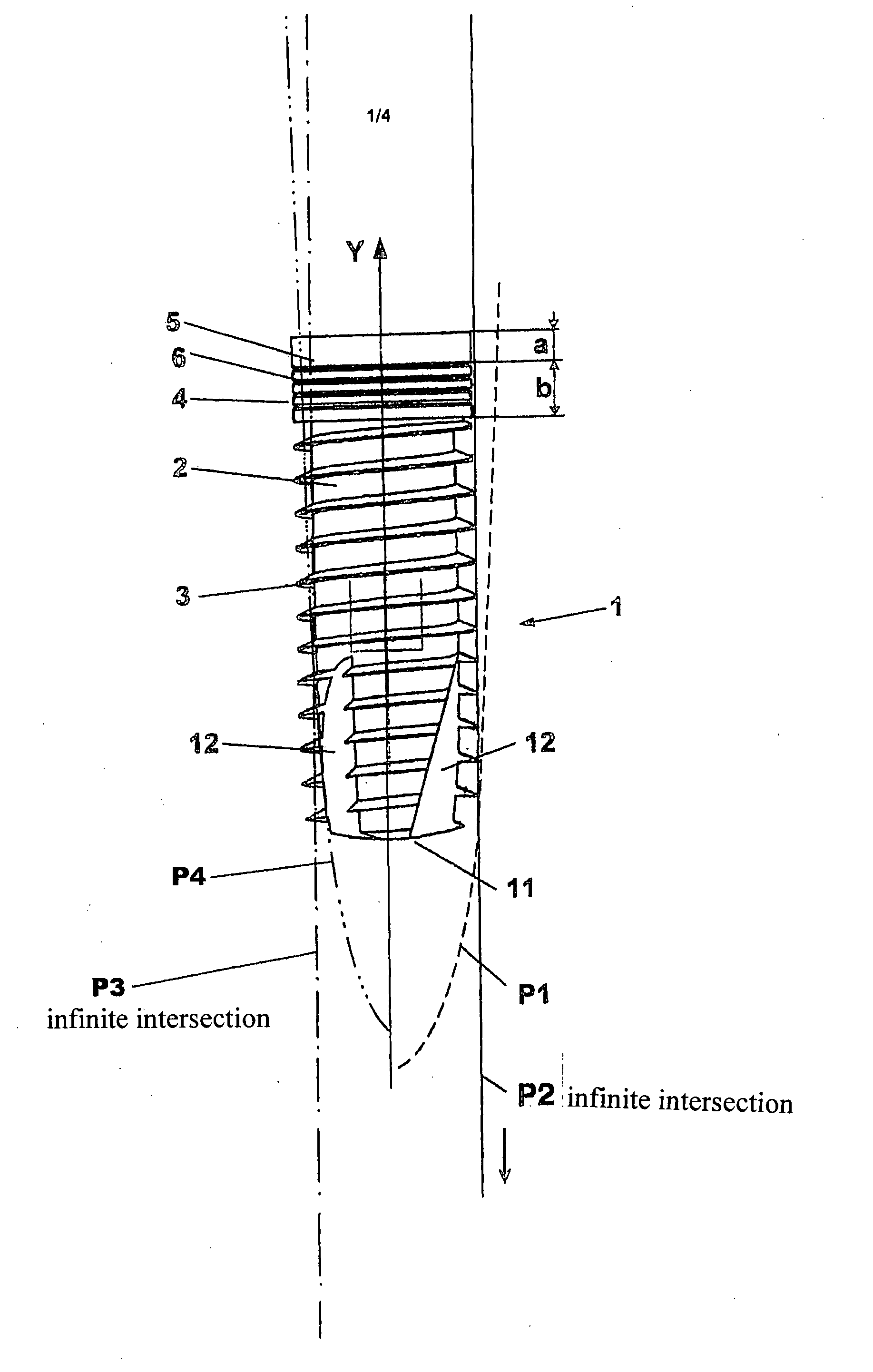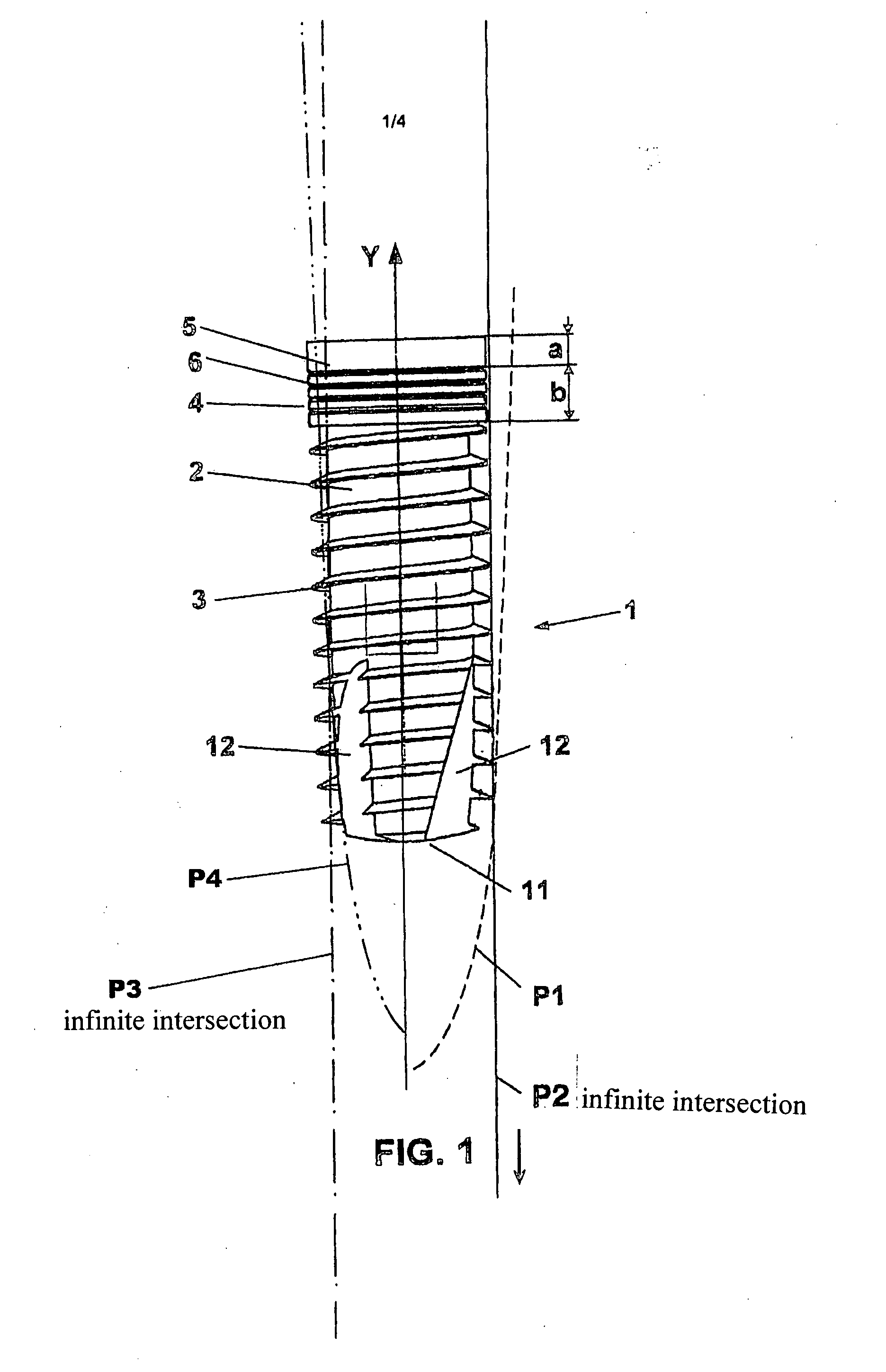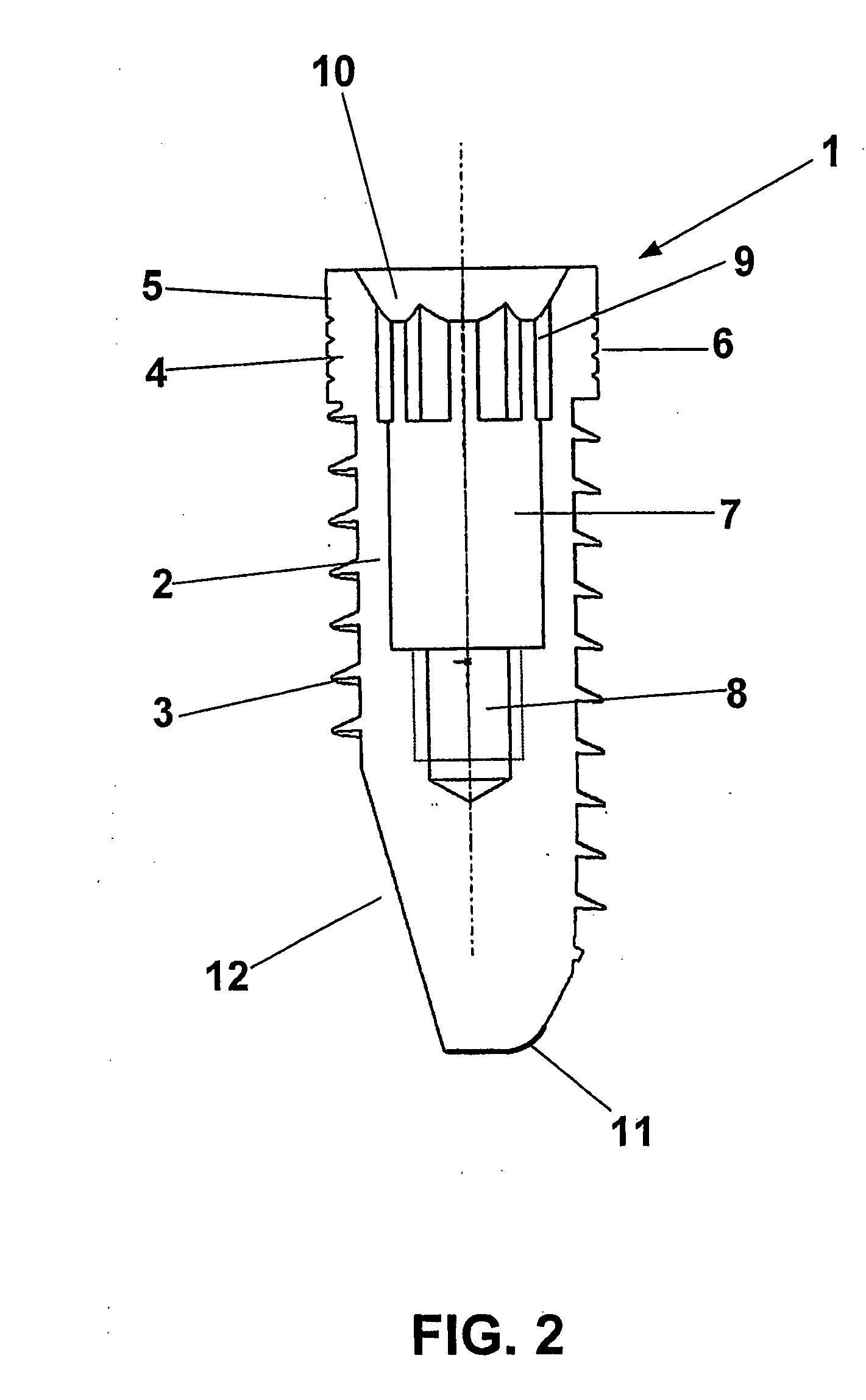Screw-in Enossal Dental Implant
a screw-in enossal and dental implant technology, applied in dental implants, dental surgery, medical science, etc., can solve the problems of unfavorable distribution of compression forces on the jaw bone, and unsatisfactory shaving removal when the implant is screwed into the bone, so as to prevent infection caused by bacterial penetration, prevent gingival inflammation, and improve healing
- Summary
- Abstract
- Description
- Claims
- Application Information
AI Technical Summary
Benefits of technology
Problems solved by technology
Method used
Image
Examples
Embodiment Construction
[0033]The inventive dental implant 1 in accordance with FIGS. 1 through 6 comprises a base body 2 that tapers from the crestal to the apical and that is provided from the apical to the crestal with a self-cutting asymmetrical thread 3, which can also be multi-threaded, having a largely constant or imperceptibly decreasing thread depth. The thread cross-section forms a scalene triangle, the flank angle of which is 20 degrees. The thread height and thus the thread 3 are enclosed in parabolas P1, P2 and P3, P4, whose axis of symmetry is that of the base body 2 and to make this easier to visualize is the Y axis of a Cartesian coordinate system. The advantageous selection of the parabolas P3 and P4 determines the thread arrangement on the base body 2, the parabolas P1 and P2 limiting the thread tip. The parabolas P1 and P2 intersect outside of the area of the dental implant 1, as shown in FIG. 1. Thus the thread arrangement runs from the apical to the crestal. The thread 3 reaches a thre...
PUM
 Login to View More
Login to View More Abstract
Description
Claims
Application Information
 Login to View More
Login to View More - R&D
- Intellectual Property
- Life Sciences
- Materials
- Tech Scout
- Unparalleled Data Quality
- Higher Quality Content
- 60% Fewer Hallucinations
Browse by: Latest US Patents, China's latest patents, Technical Efficacy Thesaurus, Application Domain, Technology Topic, Popular Technical Reports.
© 2025 PatSnap. All rights reserved.Legal|Privacy policy|Modern Slavery Act Transparency Statement|Sitemap|About US| Contact US: help@patsnap.com



